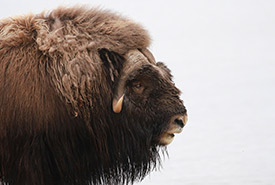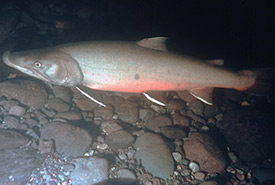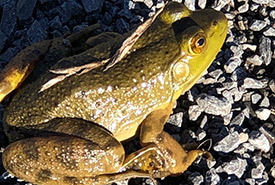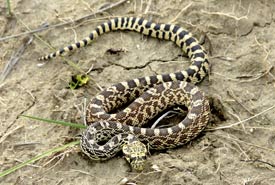Let's talk about bulls this Lunar New Year

Muskox (Photo by camerondeckert, CC BY-NC 4.0)
Lunar New Year is celebrated every year and is marked by an animal zodiac on a repeating 12-year cycle. This year marks the year of the ox. According to Chinese mythology, the ox was the second animal to cross the finish line in a great race held by a deity who rewarded the contestants by naming a year after them in the order they placed.
Fun fact: The Chinese character for ox is 牛 (pronounced niú n Mandarin and ngau in Cantonese).
While celebrations might look very different across the globe this year, I am learning a little more about my zodiac and culture virtually, and about some species on Canadian soil. Here are some fun facts about a truly wild bovine and three alternative “bulls.” The Nature Conservancy of Canada (NCC) protects habitat where some of these species live.
Muskox – The largest herbivore in the Arctic tundra
The muskox is a large, shaggy ruminant that resembles bison but has impressive horns that curve downward around its face and out. It lives in the Arctic coastal and inland plains, as well as river valleys. Its insulating coat is comprised of a hairy outer and a woolly inner layer that’s eight times warmer than sheep’s wool. So, weathering -40 C temperatures and howling storms is a breeze.
To defend against its natural predator — wolves — a muskox herd will run to higher ground or an area with little snow, and form a tight ring around and facing the predator. Bulls or cows then charge at the wolves, and calves seek protection by pressing their side against its mother.
Bull trout – A salmonid with an unusually large head and mouth

Bull trout (Photo by Ernest Keeley, CC BY-NC 4.0)
A member of the fish family that includes salmon and Arctic char, bull trout are named for their large size and a wide head and pronounced jaw. This species is found in the waters of western Canada, where the Pacific population is not at risk, while South Coast British Columbia and Western Arctic populations are assessed as special concern the by Committee on the Status of Endangered Wildlife in Canada (COSEWIC). The Saskatchewan — Nelson Rivers populations are assessed as threatened. They are threatened by the habitat loss and barriers (like dams) along their migration route. Brook trout, which is introduced and non-native in western Canada, is known to displace bull trout by out competing them for food and resources.
NCC's Darkwoods Conservation Area in BC provides habitat for the Nelson Rivers populations. Learn more about the species here >
Bullfrog – The largest frog in North America

American bullfrog (Photo by Todd Norris, CC BY-NC 4.0)
With eardrums bigger than its eyes, the bullfrog is easily distinguished by its size, which can reach up to 20 centimetres in length. Its skin can be olive, brown or green and may have a mottled pattern.
Unlike other frog species, the bullfrog lacks folds of skin that run down each side of its back; instead, there is a fold that runs behind its ear drums.
Bullfrogs are native to southern Ontario (e.g. NCC's Brighton Wetland), southern Quebec (e.g.the Laurentians), New Brunswick and Nova Scotia, but they were introduced and are invasive in British Columbia. Their call is a deep rumble that sounds like “jug-o-rum” or “rum-rum-rum.”
Bullsnake – A communal nester among snakes

A bullsnake neonate - note the dark, chocolate-brown barring. (Photo by Wonnita Andrus/NCC staff)
Bullsnakes are one of the largest snakes in Canada, occasionally growing to over two metres long. This species sports yellow scales with blotches of black, brown or reddish-brown on its back while its underside is yellow or yellow-white with black or brown spots.
It occurs in Alberta and Saskatchewan and is assessed as special concern by COSEWIC. This species often uses communal dens and nests. Although mighty in appearance, this species faces threats, such as road mortality and loss of habitat.
The bullsnake occurs in the natural areas of southern Alberta and Saskatchewan where NCC has protected land.
I hope you gained some appreciation for these amazing wildlife and learned about some of their conservation needs. On that note, I wish everyone a happy "niu" year!


